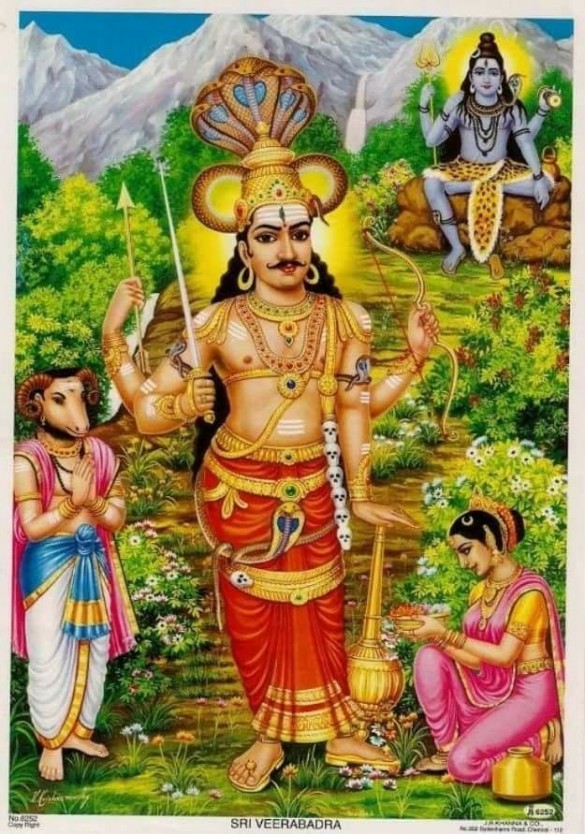
In Hindu mythology, Lord Shiva is revered as one of the principal deities, known for his various avatars (incarnations) that embody different aspects of his divine nature. Among his many incarnations, the Virabhadra avatar holds a significant place. Virabhadra, a fierce and formidable warrior, is believed to have been created by Lord Shiva to avenge the death of his beloved wife, Sati. The Virabhadra avatar of Shiva stands as a captivating embodiment of divine wrath and formidable power. Created to avenge the death of Sati, Virabhadra represents the eternal cycle of creation and destruction, and the force that annihilates evil forces in the universe.
ALSO READ - All About Trimbakeshwar Temple
The tale of Virabhadra begins with the story of Sati, Lord Shiva's consort. Sati, the daughter of King Daksha, was deeply devoted to Shiva. However, her father disapproved of their marriage and held a grand sacrificial ceremony, intentionally excluding Shiva. Consumed by grief and humiliation, Sati self-immolated in the sacrificial fire. Enraged and grief-stricken by the loss of his beloved wife, Shiva unleashed his divine fury, tearing out a lock of his matted hair and throwing it to the ground. From this fiery lock of hair emerged Virabhadra, an awe-inspiring being with multiple arms and an indomitable spirit. Lord Shiva ordered Virabhadra to destroy Daksha's sacrificial ceremony and avenge Sati's death.
ALSO READ - Embracing Sawan: A Auspicious Start to July 4th
Virabhadra's name derives from the Sanskrit words "vira" meaning "hero" and "bhadra" meaning "blessed" or "auspicious." As the embodiment of Shiva's anger, he represents the destructive yet necessary aspect of creation. Virabhadra's appearance symbolizes the raw power of Shiva and his ability to annihilate ignorance and evil forces. Depicted with multiple arms and a fearsome countenance, Virabhadra wields various weapons, including swords, tridents, and bows. Each of his arms signifies different qualities and powers bestowed upon him by Lord Shiva, such as valor, strength, and wisdom. His third eye, located on his forehead, symbolizes spiritual knowledge and the ability to see beyond the physical realm. One of the most renowned stories involving Virabhadra is his confrontation with Daksha, Sati's father. In a fit of rage, Virabhadra stormed into Daksha's sacrificial arena, wreaking havoc and destroying everything in his path. He decapitated Daksha, humbling the arrogant king and putting an end to the sacrificial ceremony. The Virabhadra avatar also appears in other mythological tales, such as the destruction of the demon Andhaka and the slaying of the demon Jalandhara. In these stories, Virabhadra showcases his indomitable might and unwavering loyalty to Lord Shiva. Devotees of Lord Shiva hold immense reverence for the Virabhadra avatar, recognizing him as a fierce protector and a symbol of divine justice. Various temples across India, particularly in the southern states, are dedicated to Virabhadra. These temples serve as sacred spaces for devotees to offer prayers and seek blessings for courage, strength, and victory over adversities.
ALSO READ - Grineshwar Jyotirling – One Among The 12 JyotirlingaDhanush's 'Captain Miller' first look out